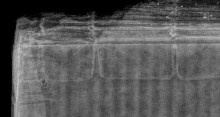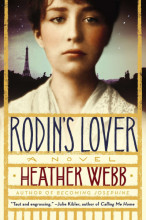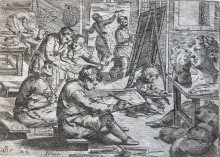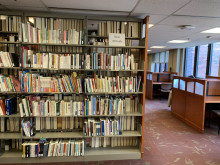Kyle Clark
Library Blogs
Showing 11 - 15 of 15 items
Results
for Date: March 2020

The University of Michigan Library and the Detroit Institute of Arts have recently collaborated in a project to produce x-ray images of the hidden structure inside a fourteenth-century Greek manuscript binding.

Rodin's Lover is a biographical novel about Camille Claudel, an amazingly talented female sculptor in late 19th century Paris. She becomes the lover of Auguste Rodin and inspires his work, but her frustration at his inability to commit to her leads her to break off the relationship. After their breakup, she creates some of her most innovative work.

Join Special Collections today for a Great Lakes Theme Semester event at 3pm in Room 660D. Dr. Elizabeth Goodenough of the Residential College will give a presentation exploring the landscapes of the Great Lakes as they shape the lives of children, writers, and illustrators. Also, from 4-6pm tomorrow, stop by Special Collections After Hours in the open study space adjacent to the 6th floor Reading Room. A wide range of published and archival material from Michigan children's literature authors and illustrators will be on display. Light refreshments will be served.

This blog post features an extraordinary well-preserved copy of what is perhaps one of the earliest extant drawing manuals that were published in Western Europe in the first half of the seventeenth century. Its author is Odoardo Fialetti, an Italian artist whose professional life flourished in Venice at the end of the sixteenth century; Fialetti had access to Tintoretto’s workshop, eventually becoming an accomplished copperplate engraver. While more than 200 engravings are attributed to him, Fialetti is best known for the illustrations he created for his two drawing manuals published in Venice in 1608 and 1609. Indeed, these two manuals became extremely popular among young artists, having a considerable impact on subsequent European manuals of this type published throughout the seventeenth and eighteenth centuries. In a few words, a drawing manual consisted of a collection of images of the human body that served as models for young apprentices; these illustrations represented the body in full or in sections, and were arranged in increasing difficulty. Essentially, these manuals were self-taught guides and, since they were meant to be heavily used as opposed to be shelved merely for reference, currently they are rarely found at libraries, museums, or private collections.

Asia Library, which celebrated its 70th anniversary in 2017, recently logged another very meaningful milestone: the number of volumes we hold has surpassed the one million mark. To be precise (we think), our collection now contains 1,006,553 volumes.